Call ducks have a history of being used for hunting and showing. These miniature ducks are famous for their charming personality and are a perfect addition to any small farm or pond.
Unlike most ducks kept as meat birds or layers, Call ducks are only raised as ornamental birds and for human companionship. The breed also has other interesting characteristics, like being talkative and friendly around children. However, this breed can also be a target for predators.
Our detailed guide explores everything you need to know about the Call duck breed, its origin, its characteristics, and if they make good pets.
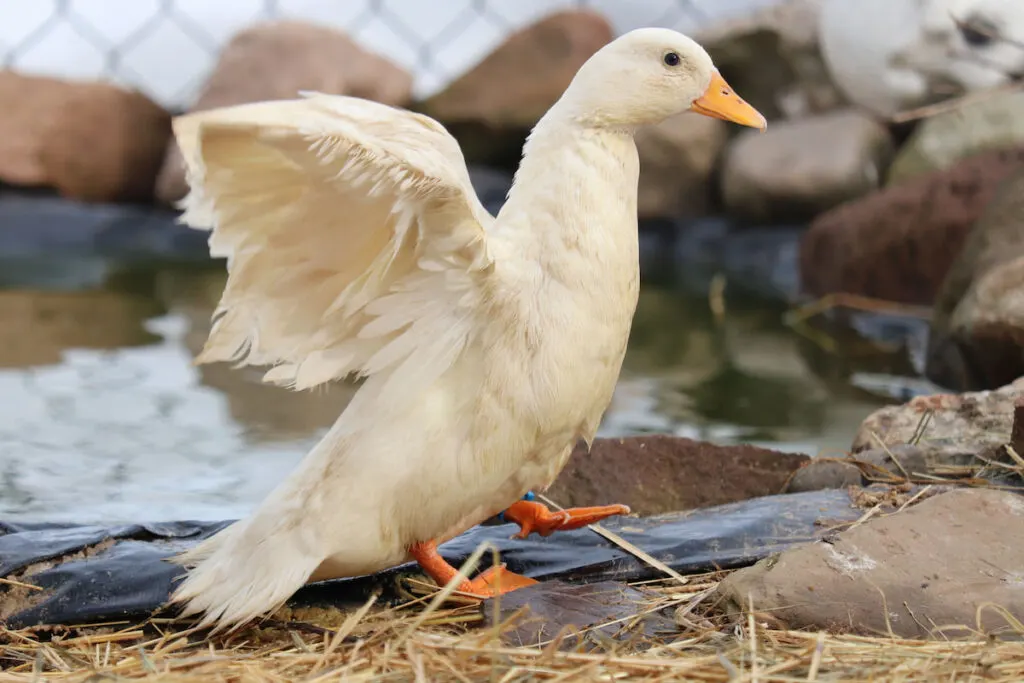
Table of Contents
What are Call Ducks?
Call ducks are a bantam, or smaller, breed of domesticated ducks. They are raised as pets or kept as show birds. These ducks also known for their high-pitched call.
History of Call Ducks
The name Call originates from the Dutch word Kool, which translates to trap. Call ducks have a high-pitched call that can be heard over a long distance.
Their history travels back to the Netherlands, where these ducks were used as decoy ducks to lure other big ducks into funnel traps.
They would then pass through the trap and escape through the exit hole, leaving the large ducks inside.
Call ducks were later introduced to Britain in the late 1800s. However, the breed became rare in the 20th century.
These ducks were introduced in the U.S. in 1874 and used as popular exhibition birds.
Physical Characteristics of Call Ducks
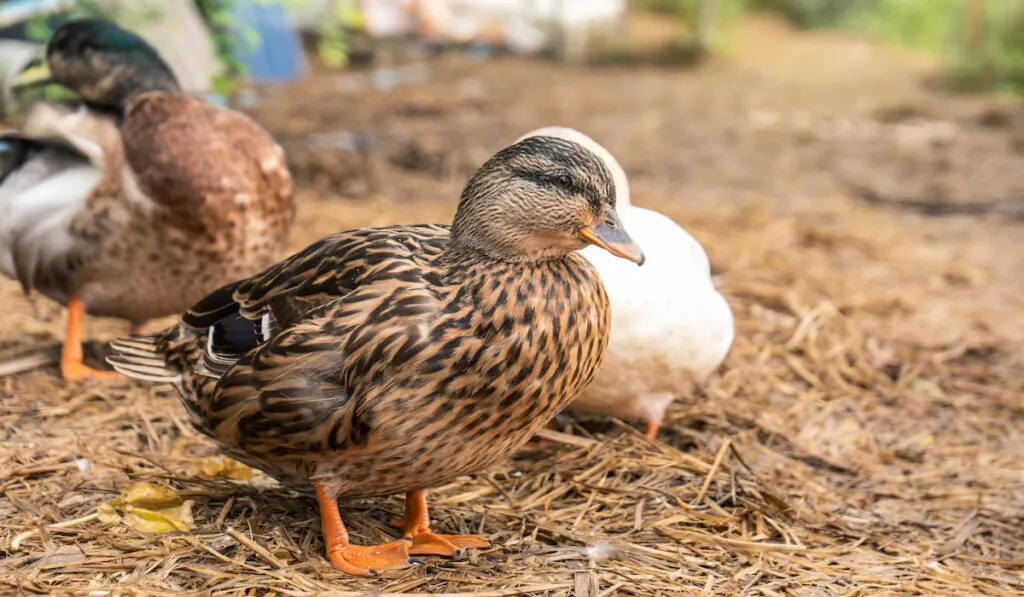
Call ducks are descendants of Mallard ducks and share certain qualities, but this breed is smaller overall with a shorter bill. Although, their head is large compared to their smaller body.
Their neck and legs are stockier in keeping with their mini stature, but their eyes are big and round.
Hens can weigh up to 21 lb, while drakes typically weigh anywhere from 19-25 lb.
Some breed colors include gray, white, blue fawn, snowy, pastel, and butterscotch, along with other non-standard varieties like pastel pied, Aleutian, and chocolate bibbed.
Call ducks can adapt to any climate and fit well in a small to medium garden.
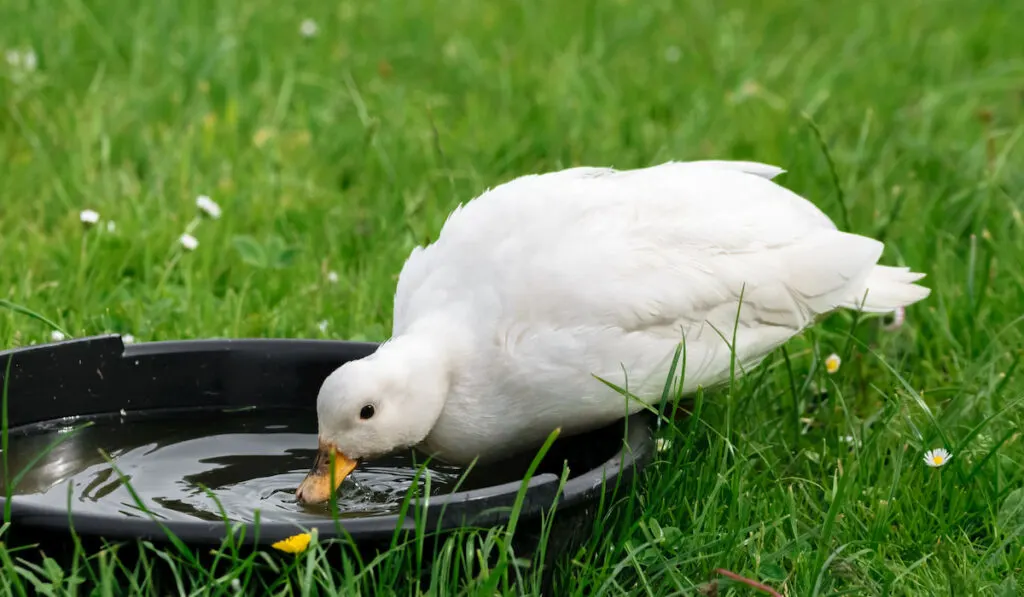
The Temperament of Call Ducks
Call ducks are chatty and boisterous and can be heard from quite a distance. As pets, they keep themselves neat and do well without much fuss if they are properly cared for.
Call ducks have a fun and playful character, which is why they make excellent show birds.
They also love to explore and can be inquisitive and adventurous when left to wander. You’ll also notice that these ducks are highly social and interact with others often.
Additionally, Call ducks are good flyers and can fly away at any chance. That means you need to have their wings clipped if you intend to raise them free range.
Uses of Call Ducks
Call ducks are mainly used in exhibitions as ornamental birds. They are kept as pets.
You can also use Call ducks for breeding, particularly if you have high-quality stock or rare variations.
Although the breed is not raised for its eggs or meat, it still lays around 150 eggs annually. Their meat is also a delicacy in certain places.
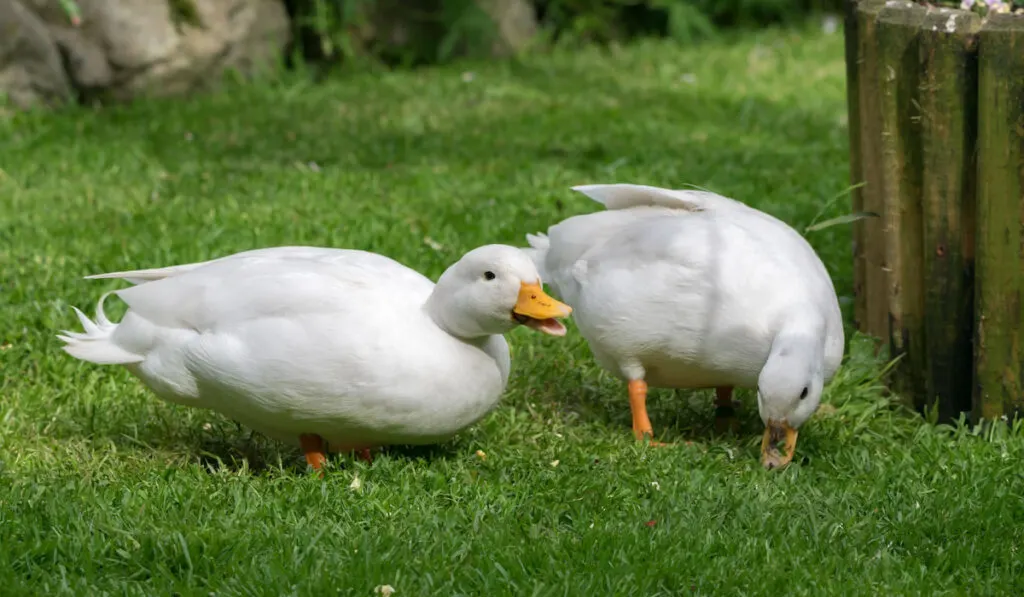
Call Duck Diet Requirements
The breed feeds on aquatic invertebrates, aquatic vegetation, insects, larvae, grains, and seeds.
Call ducks should not be fed on chicken feed. Instead, you can get layer feed that’s formulated for ducks. It provides extra calcium that’s essential during the breeding season.
Duck pellets are also an excellent option as they contain all the vital macronutrients and protein to keep your Call ducks healthy.
Corn helps them maintain weight, while sunflower seeds preserve their shiny plumage. Adding limestone grit to their diet also helps with digestion.
If your Call ducks are not free to forage, toss in some leafy vegetables and grass to keep their vitamin levels high.
Provide constant access to fresh and clean water to avoid impaction in your ducks. Have a small dish of water close to where they feed.
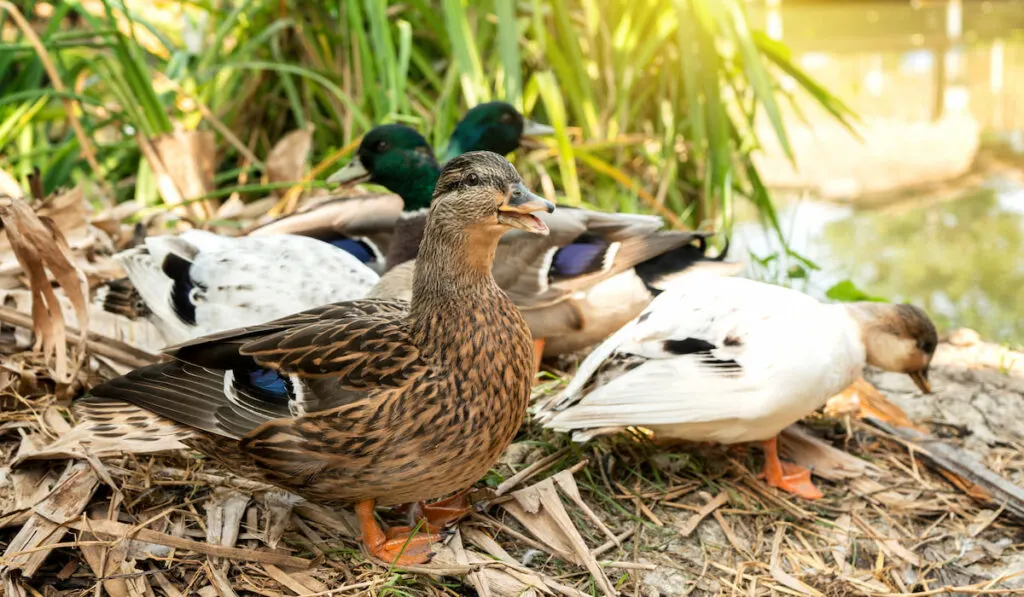
Are Call Ducks Good Pets?
Call ducks can make good pets if tamed and handled correctly from a young age. They are simple to raise compared to other duck breeds. You can raise Call ducks with other ducks.
These ducks are also very friendly and won’t attack strangers.
Individuals with less space to accommodate large duck breeds will find Call ducks convenient due to their petite size.
They require less space and food, which makes raising them more economical.
These ducks love to live in wetlands. They’ll need shallow containers to reach the water as they are smaller than other duck breeds.
You can use under-bed storage containers to make a pool for them to swim in. Place some bricks on the sides for them to climb in and out.
Kitty litter pans and kiddie pools are also perfect for accommodating several ducks. Swimming enriches their quality of life. Make sure to empty the water often to prevent bacterial infestation.
Call ducks also interact well with children, thanks to their size. Once tamed, they are friendly and amusing to watch.
If you intend to keep Call ducks in a small backyard close to neighbors, you’ll want to be careful as they can be very noisy and distracting.
You may need to rethink your decision and get a quieter duck breed.
Furthermore, Call ducks must be kept in a secure area. That’s because they are a popular target of predators.
If your duck is well cared for, it will live anywhere from four to eight years. It’s even possible for this breed to make it twelve years!
How Many Types of Call Ducks Are There?
Call Ducks have different variations depending on the mallard pattern. Some of the common types include:
Snowy Call Ducks
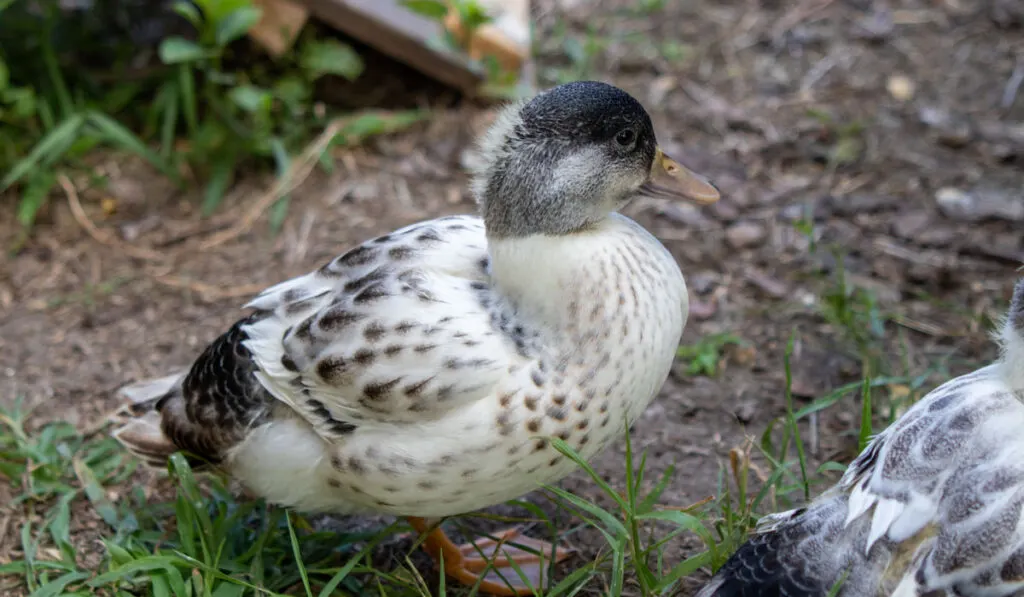
Snowy Call ducks have a unique lace pattern and a cream color. They have a striking and distinctive appearance. The drakes have dark green heads, rosy chests, and wings with dark bars.
White Call Ducks
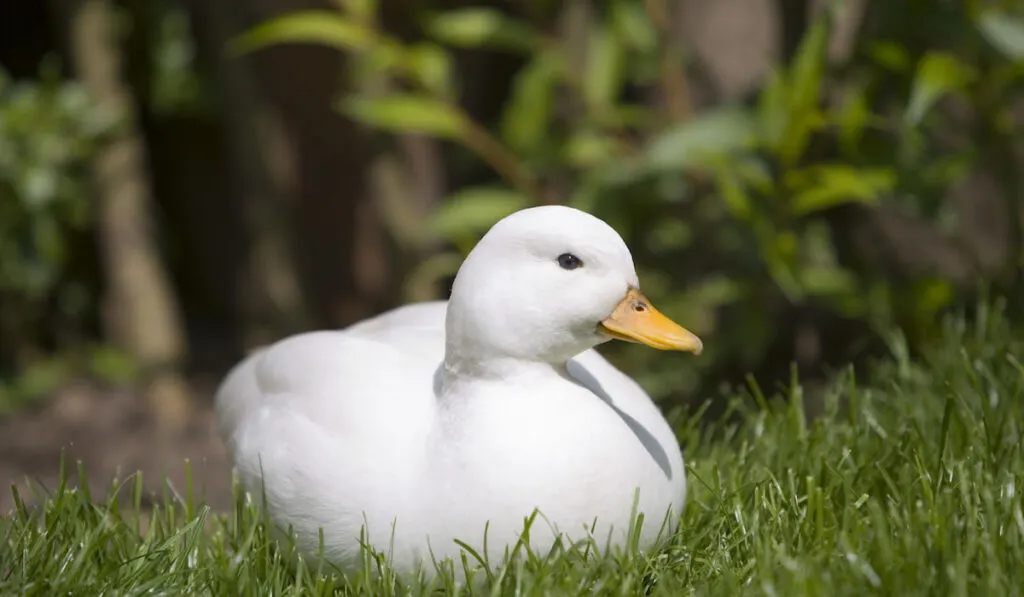
White Call ducks are the most common and were first standardized in 1860.
The breed has a pure white color and blue eyes.
Pastel Call Ducks
Pastel Call ducks have a muted, soft pattern. Their heads have gray and lavender combinations, while their chests are rust-colored. Pastel Call ducks also have a white ring around their necks.
Gray Call Ducks
Gray Call ducks look like wild Mallards. Hens have a brown color with dark lacing, while the drakes have red chests, blue-greenish bars on their wings, and a white ring around their necks.
One striking feature of Gray Call ducks is their iridescent emerald green head that you can recognize from afar.
Black-Bibbed Call Ducks
Black-Bibbed Call ducks can sometimes have white bits on their wings. However, their chest is primarily black with a white bib.
Buff Call Ducks
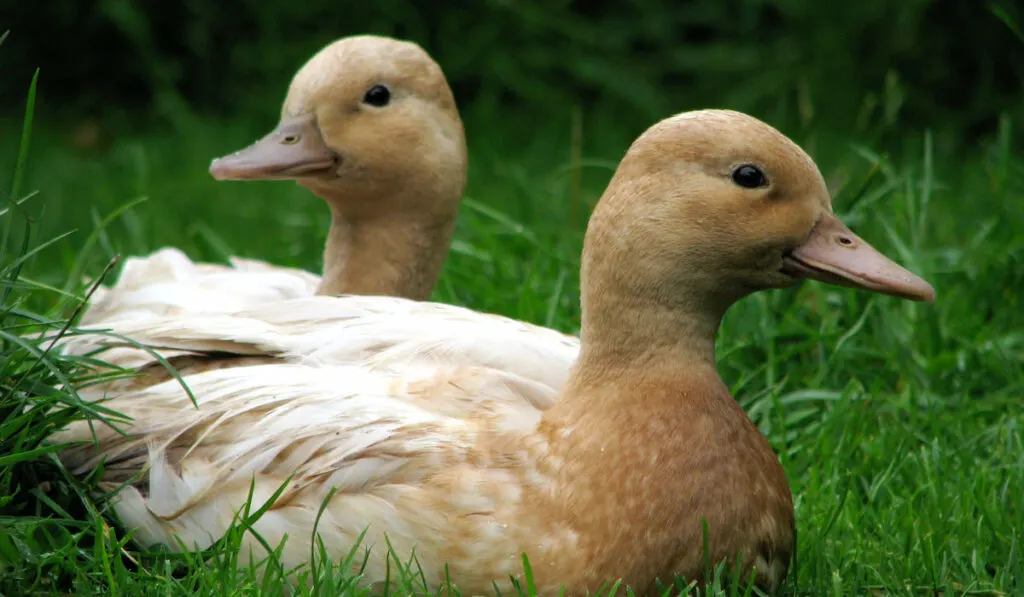
Buff Call ducks have fawn-colored plumage. The only difference between the drake and the hen is that the former has a slightly pale gray head.
Magpie Call Ducks
Magpie Call ducks almost resemble the Black-Bibbed Call ducks. However, the Magpie ducks have white splotches and iridescent black. It’s a combination of black and white markings.
Pied
Pied Call ducks have a white body with defined patches of blue, black, or brown throughout their body.
Blue Fawn
Blue Fawn Call ducks have light gray-blue feathers on their body and dark gray-blue neck. Other typical Call duck variations include the Butterscotch, Apricot, Buff, and Khaki.
Final Thoughts
Call Ducks are a great breed to raise as pets as they are cheap to keep and have an easy-going temperament.
They also like to forage around for food, making them ideal for free-range farming. As ornamental birds, these ducks have different color variations that are stunning.
However, you should avoid this breed if you plan to raise them in a small backyard, as they can get noisy and distract your neighbors.
With the above information in mind, you can weigh the advantages and disadvantages of these ducks and make an informed decision.
Resources
- https://beautyofbirds.com/ducks/
- https://ashtonwaterfowl.net/call_ducks.htm
- https://www.callducks.net/looking_after_calls.htm
- http://afs.okstate.edu/breeds/poultry/ducks/call/index.html/
- https://www.waterfowl.org.uk/domestic-waterfowl/call-ducks/
- https://petkeen.com/call-duck/
- https://www.roysfarm.com/call-duck/
